a sky like turquoise,
a sea like lapis lazuli,
mountains like emerald,
air like heaven
– From Fréderic Chopin’s letter on Mallorca
Liz, an expat from Connecticut and the driver currently navigating the steep climb up the unpaved road, revs all four cylinders to handle hairpin turns while somehow keeping the van upright. Each groove jostles my body to and fro and I can’t help but laugh; the drive has made me aware of bones I didn’t know I had. In the distance, the golden evening light accentuates the texture of an aged stone exterior, and we come to a stop in front of the fourteenth-century former monastery titled Son Rúllan, our rustic home for the week in Serra de Tramuntana. Bidding our fearless driver adieu, we are greeted by Carmen Ruiz de Huidobro, founder and host-in-chief of Españolita Trips. I am one of seven travelers on this intimate culinary retreat, the first of its kind in Mallorca. Pleasantries exchanged, I step through the weathered arched doorway and back in time. White walls and wood beams frame the vertical foyer, the scent of wood and plaster permeates the space. Pebbled flooring spills before me, pressing through the soles of my avarcas. Short staircases lead here and there. A painting of Jesus Christ recessed in an archway sits atop a wooden console illuminated by candles.
I leave my bags in my lofty room—complete with surreal views of the sea and mountains—and venture through the maze-like house. Fresh oranges huddle in a wooden bowl next to carafes of water. Canisters of sea salts and herbs perch on earthen shelves in the kitchen. Spanish music echoes off the stuccoed walls and sprigs of wild flowers stand alert in slim vases on every table, indoors and out. The back of the house extends the invitation to explore: alcoves cloaked in foliage, cushions propped and ready for relaxed conversations, a labyrinth of stone pathways beckoning for a peek. Looming silhouettes of trees and mountain—eerie yet beautiful—split the burnt orange and indigo sky. I’m standing in a dream.
“Deepi, my love, can I get you anything?”
The query, wrapped in a rolling Spanish accent, belongs to Ruiz de Huidobro who is standing behind me, hands full balancing food and plates. To ask for anything more seems selfish.
“I’m good, Carmen, thank you,” I respond with a smile and follow her to the outdoor dining room unrestricted by doors or window panes. My eyes scan the table as Ruiz de Huidobro places her items on the rich, worn wood partially masked by food, dinner ware, and elements of nature. Bread. Check. Tomatoes. Check. Olive oil. Check. Sea salt, cured meats, cheese and wine. Check, check, check and check. I join my fellow travelers at the table to experience my first meal in the Balearic Islands.
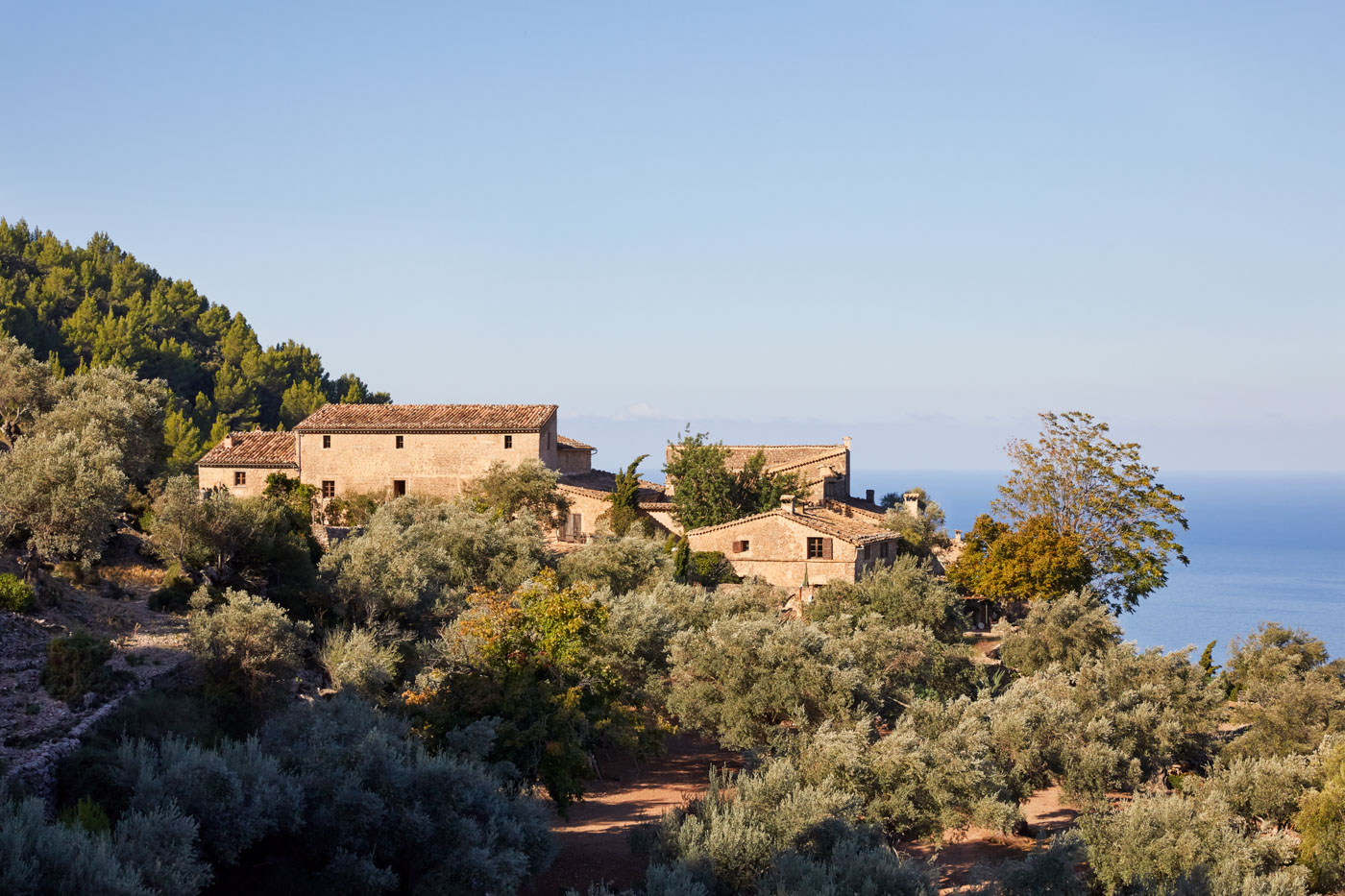
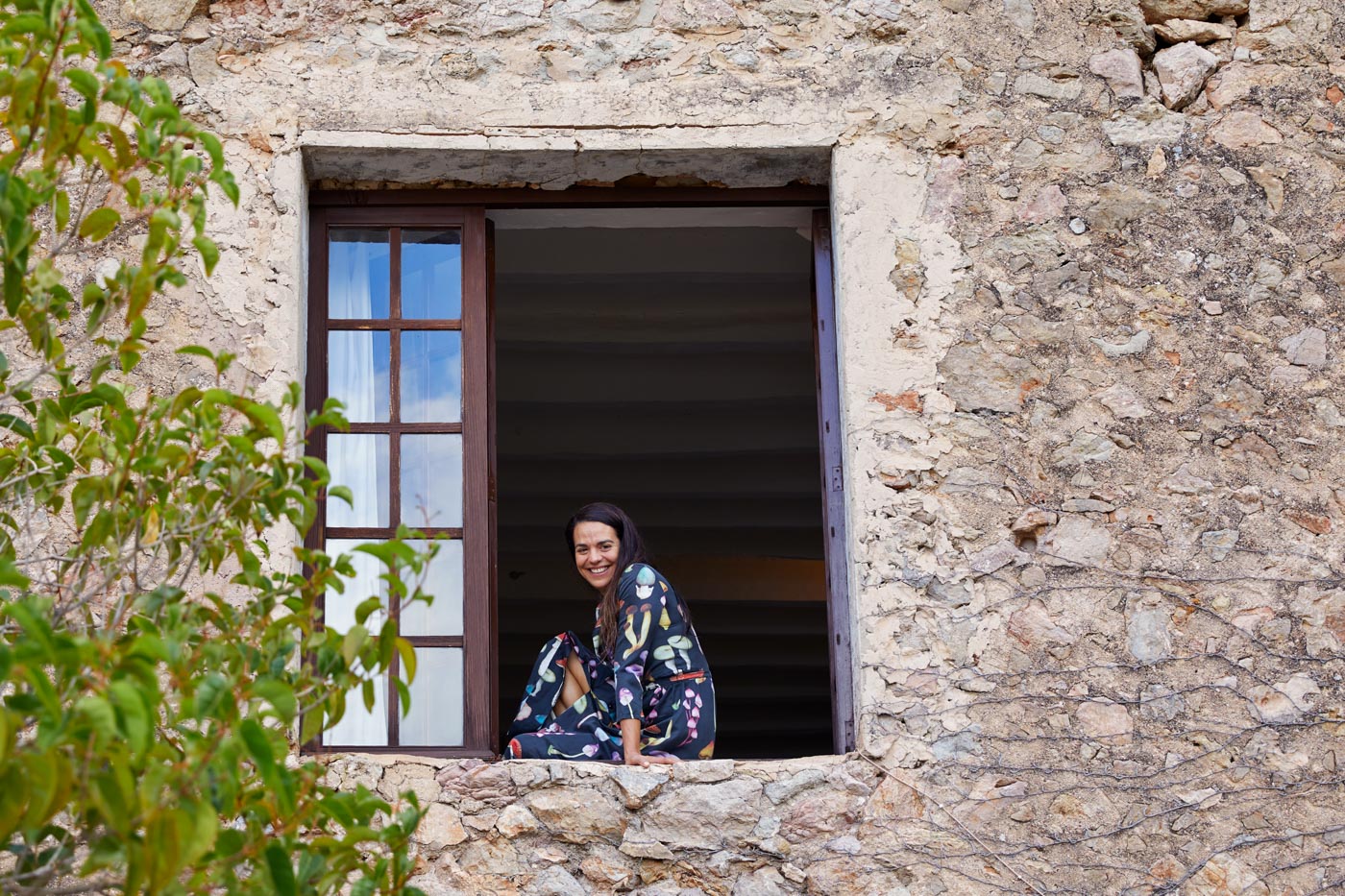
Peasant Dreams
“We really wanted to greet you with a traditional Mallorcan dinner,” says Deborah Piña Zitrone, culinary communication specialist, olive oil expert, and co-host of the retreat. “When we refer to the Mediterranean food culture, we always refer to the Mediterranean trilogy: bread, wine and olive oil. This is called pa amb oli, which translates to ‘bread with olive oil.’” Though it’s by no means elaborate, partaking in pa amb oli involves some key steps, beginning with a specific type of tomato—the ramallet, which is small and has a very tough, thick skin, and is specific to Mallorca. “[The ramallets] are not sweet but more saline and have a very particular acidity,” explains Piña Zitrone. “They are not good for eating, but you can spread them on bread.” I slowly rub the red fruit across the coarse surface of Mallorcan bread, letting the juices and pulp absorb into the hearty brown slice. A drizzle of local olive oil from Solivellas, and sprinkle of aromatic sea salt from Flor de Sal d’Es Trenc—both Mallorcan producers—completes the process. We politely pass and share a medley of accompaniments: Menorca cheese, dried figs, pickled sea fennel, and nora, a cooked pork sausage containing raisins and apricots. Each ingredient—sacred to Mallorcan culture—is simple yet refined.
The next morning, the stillness of the Tramuntana mountains and Balearic Sea is ethereal, the silence occasionally broken by the bleating of sheep and the cowbells dangling from their necks. I follow the faint clinking of dishes coming from the kitchen and the first person to greet me is Barbara Iten, a transplant to the island who is assisting Piña Zitrone during the retreat. She shows me to a breakfast spread of fresh fruit, warm breads, avocado, jamón ibérico, cheese, and Son Moragues marmalades, and asks me how I like my coffee. This is not the kind of food you will find on hotel menus; it feels distinctly of home. There are no scrambled eggs or hashbrowns to cater to American palates. If it’s not true to Mallorca, you won’t find it on the table.
We spend the first part of our day visiting the Pollença market and swimming in the aquamarine waters of the Cala Murta cove, and when we arrive back at Son Rúllan, the dinner table has been transformed into multiple cooking stations, complete with mixing bowls, rolling pins, and an array of ingredients. The outdoor, wood burning oven is pre-heating awaiting our Coca Mallorquina, a traditional flatbread topped with simple ingredients such as trampó—tomato, onions, peppers—a dish typically served at social gatherings. The culinary vision here is to celebrate only rustic, Mallorcan food. “What we call traditional Mallorcan cooking today is really peasant food,” says Piña Zitrone, explaining that medieval social structure—comprised of the very poor, and the very rich—and its history, have led to the island’s gastronomic tradition. “Because of a short famine in the nineteenth century there was not enough food available, so only the poor heritage was preserved.”
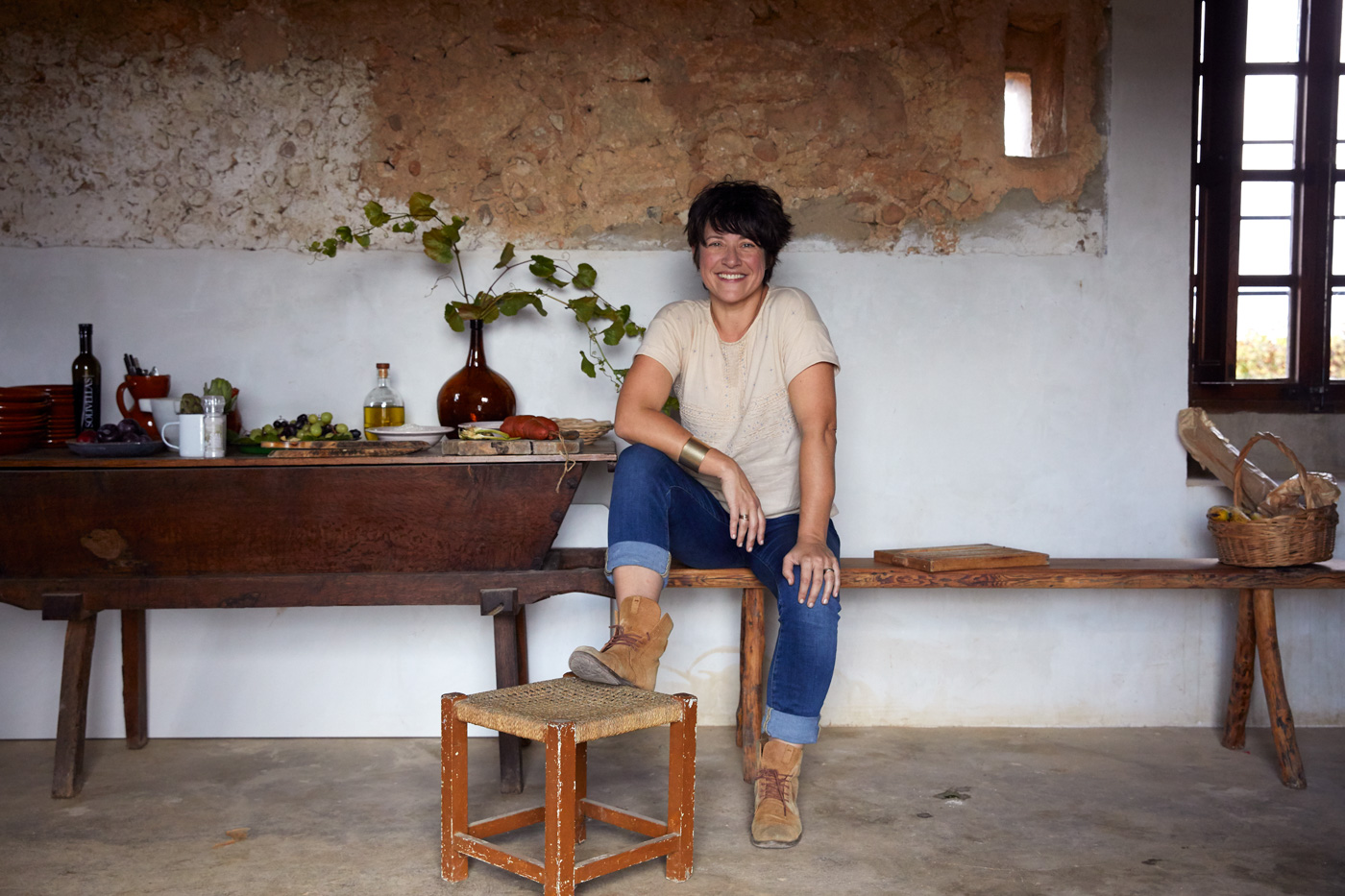
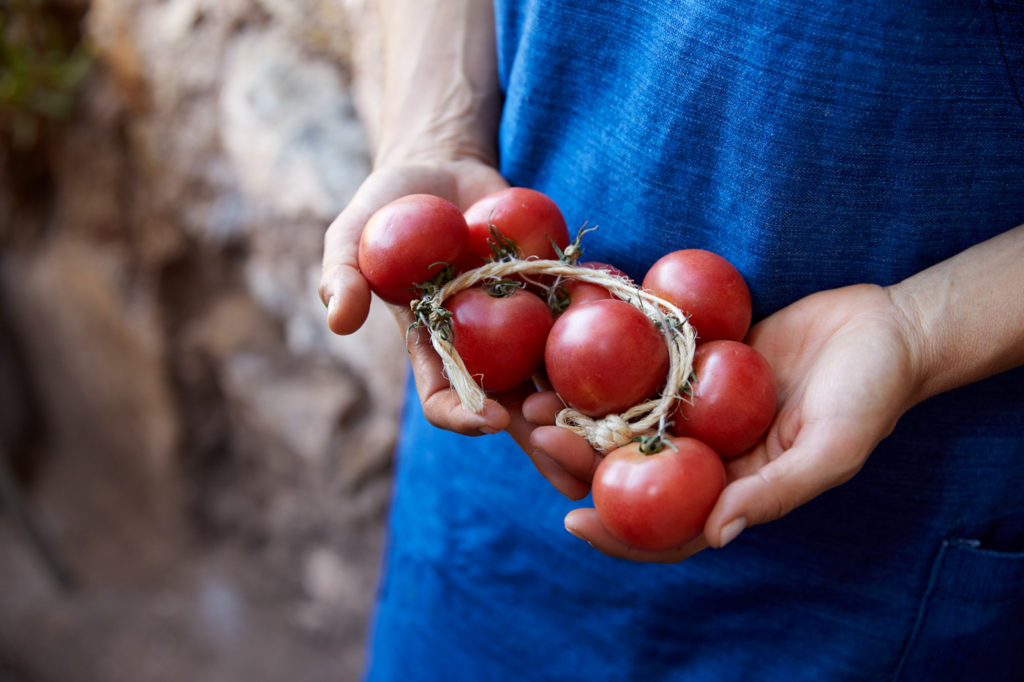
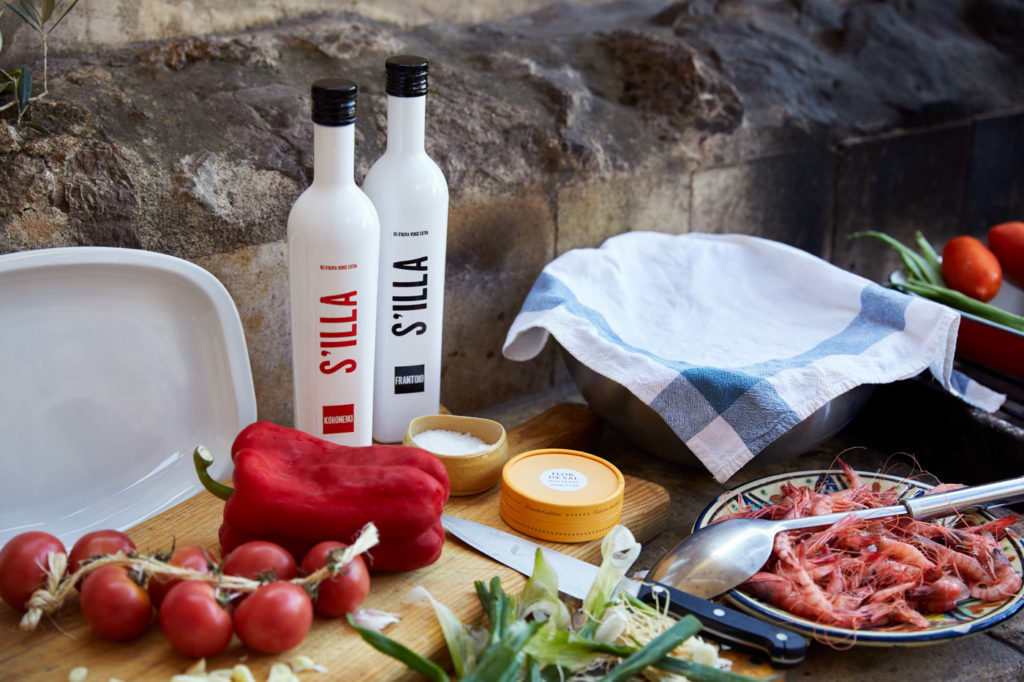
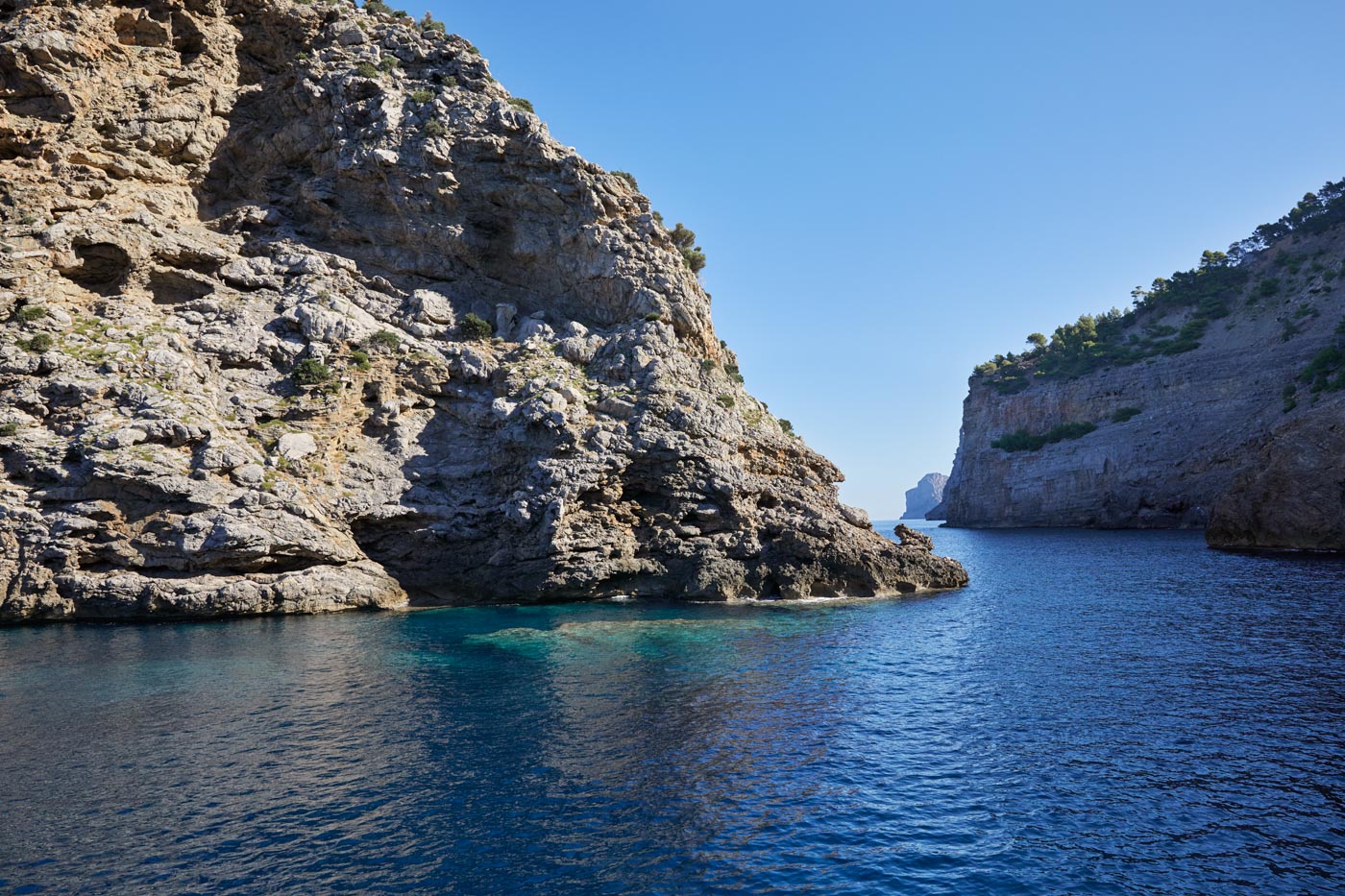
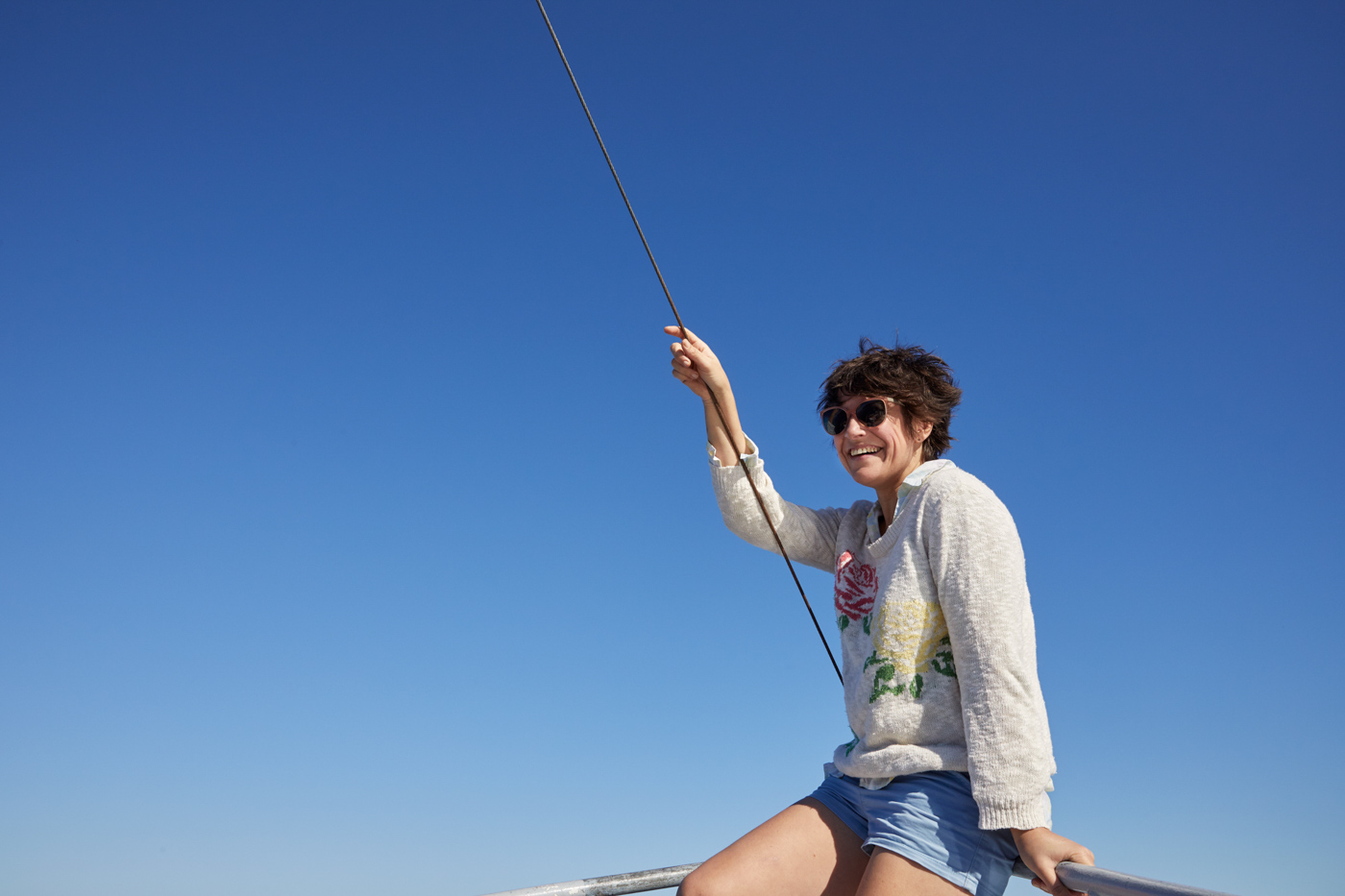
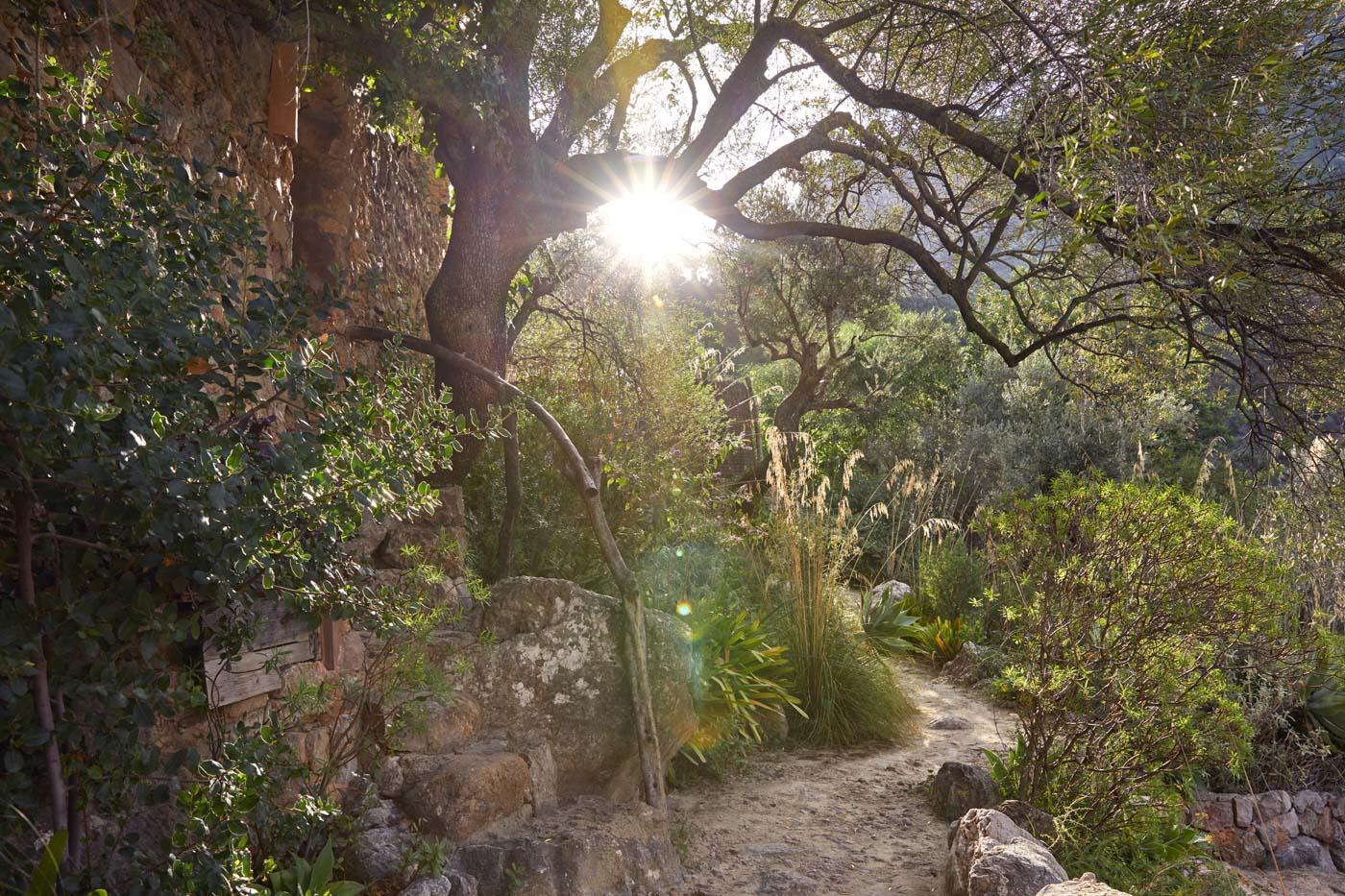
A Culture of Hospitality
Ruiz de Huidobro meanders up the stone path, three bottles of wine expertly grasped between her fingers. There is an air of ease in her style of hosting; she was groomed from a young age to be a good host: to properly set the table, serve food and drinks, and make guests feel welcome in her home. “Hosting is so ingrained in Spanish society,” she says. “Everyone entertains at home without any effort.”
As she clips and arranges olive branches for a centerpiece, Ruiz de Huidobro explains why creating this retreat was important to her. Her years in the U.S. left her longing for her childhood home, and ultimately spurred the creative process which led to the birth of Españolita Trips. “I asked myself a series of questions: what do I miss since I’ve been living in the U.S.? What places are inspiring from my country? What makes me want to share these moments with my kids? I realized it was a mix of everything: tastes, smells, views, textures, colors,” she explains. “I had to find a way to compile all these things and present it to people so I could inspire them to find their own magic in Spain.” Ruiz de Huidobro’s parents fell in love with Mallorca before she was born. They purchased a finca—a piece of rural land with a house—not far from Pollença where she spent her youth exploring the island that would become her second home. “I realized what I was missing about Spain was not the city life of Madrid, where I’m from, but the rusticness of this countryside where I grew up.”
Her holistic aesthetic and attention to detail goes beyond the dinner table to the entire house where she seamlessly weaves fabrics, colors and textures together—all to enhance the rustic vibe of Son Rúllan. It’s an art Ruiz de Huidobro has honed while working in film as a production designer in Los Angeles. This property is her set; she wants you to not only see, but to feel. “We are taking your hand and showing you around, and maybe it’s a little out of your comfort zone,” she says. “We’re doing this for the traveler. It’s about what they feel through the experiences we’re putting together. My heart is here in Mallorca. It’s romantic without it wanting to be romantic. I haven’t felt this anywhere else.”
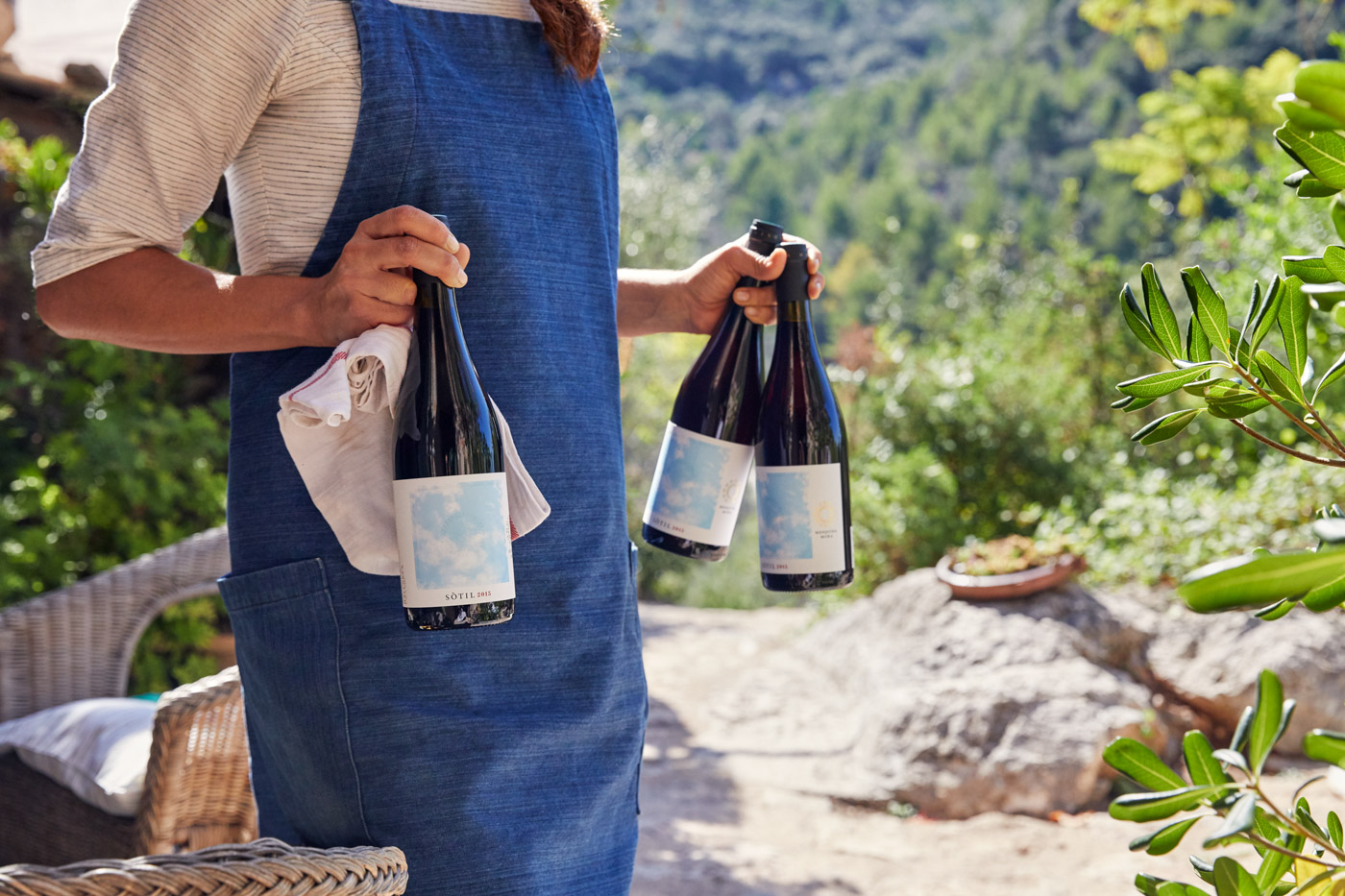
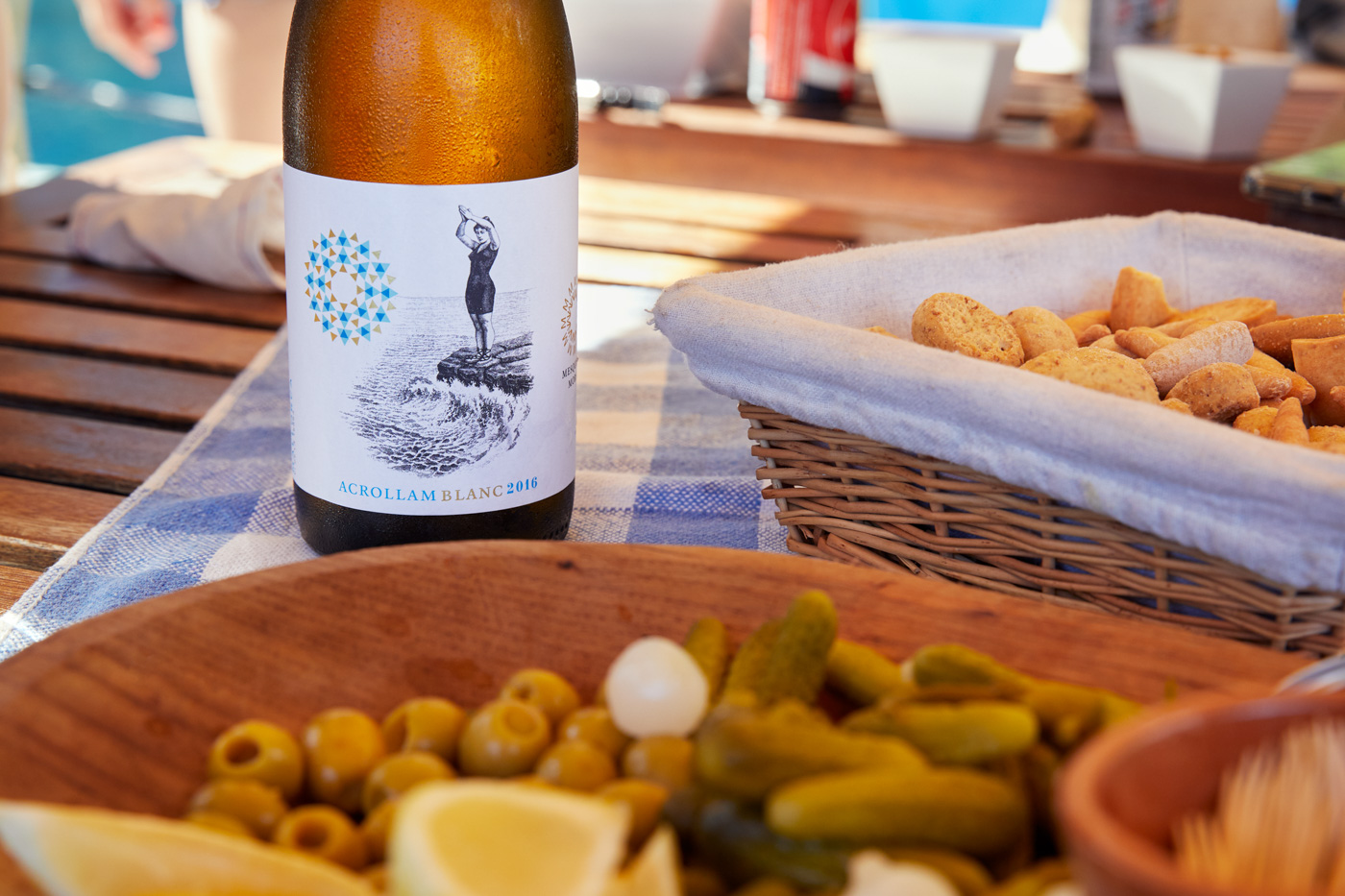
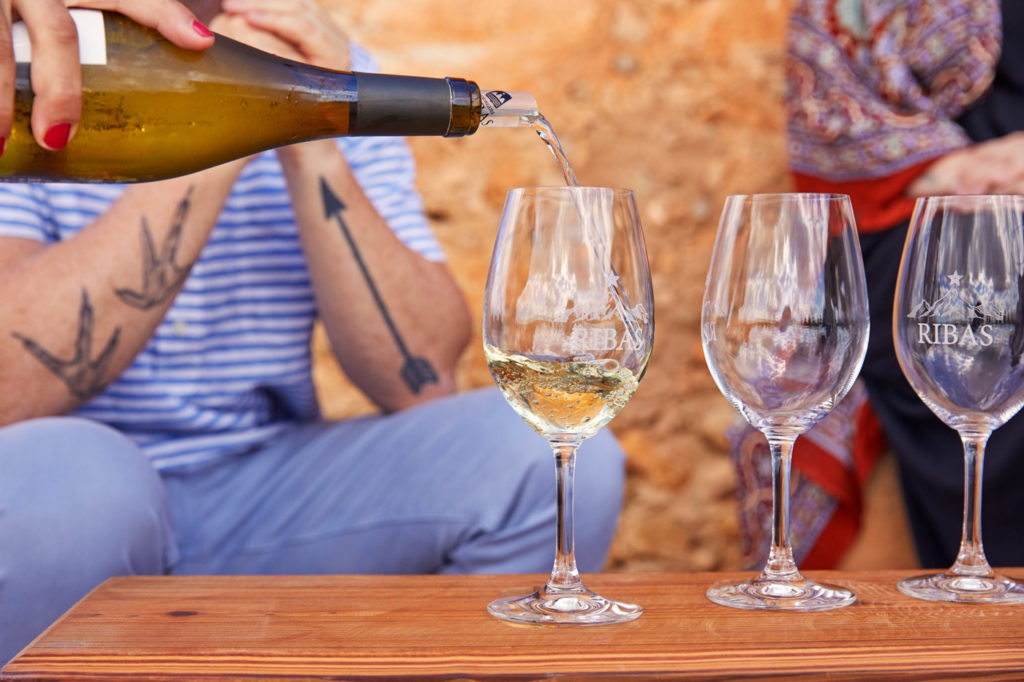
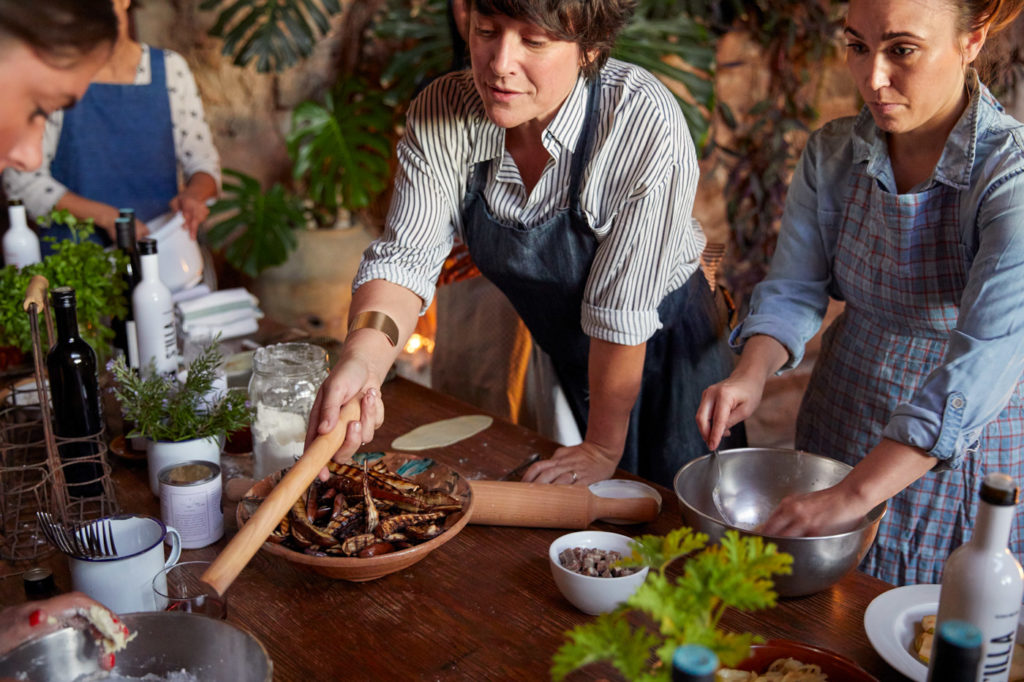
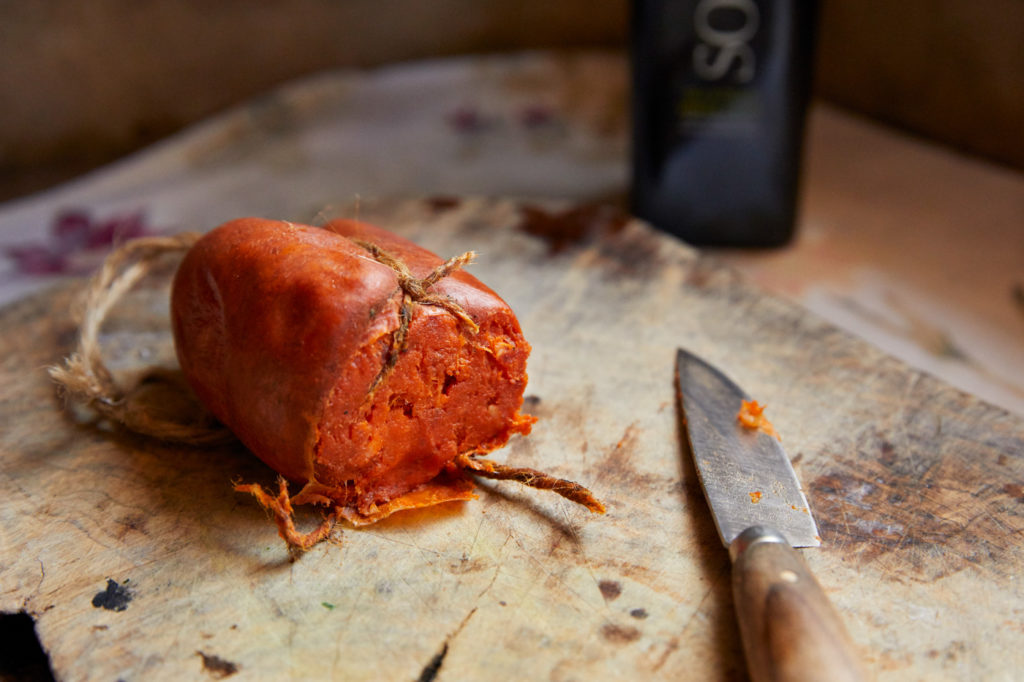
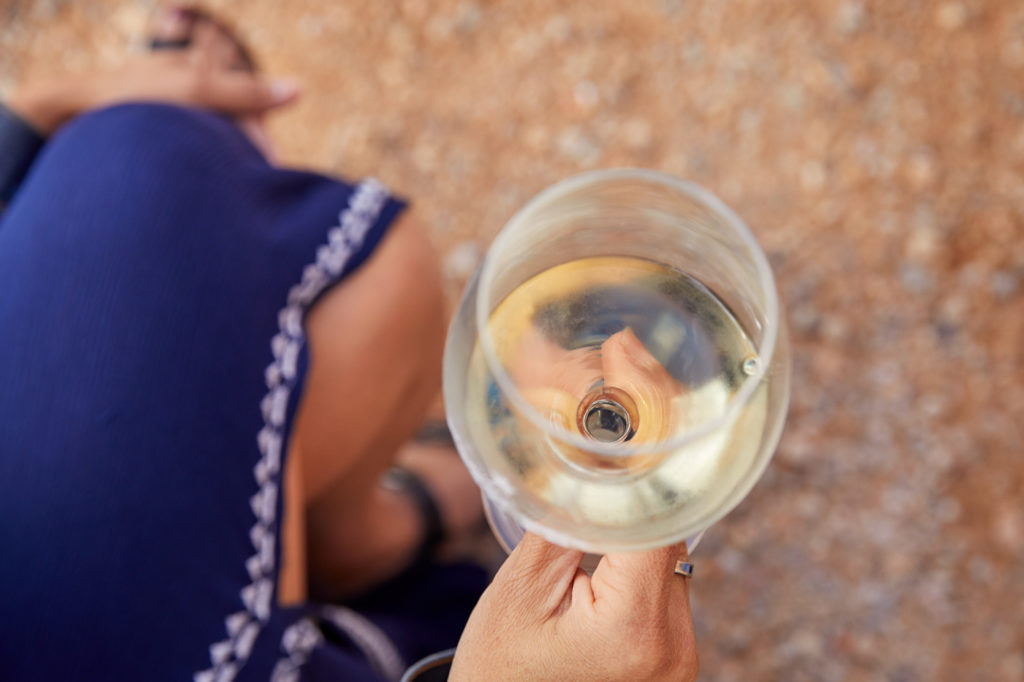
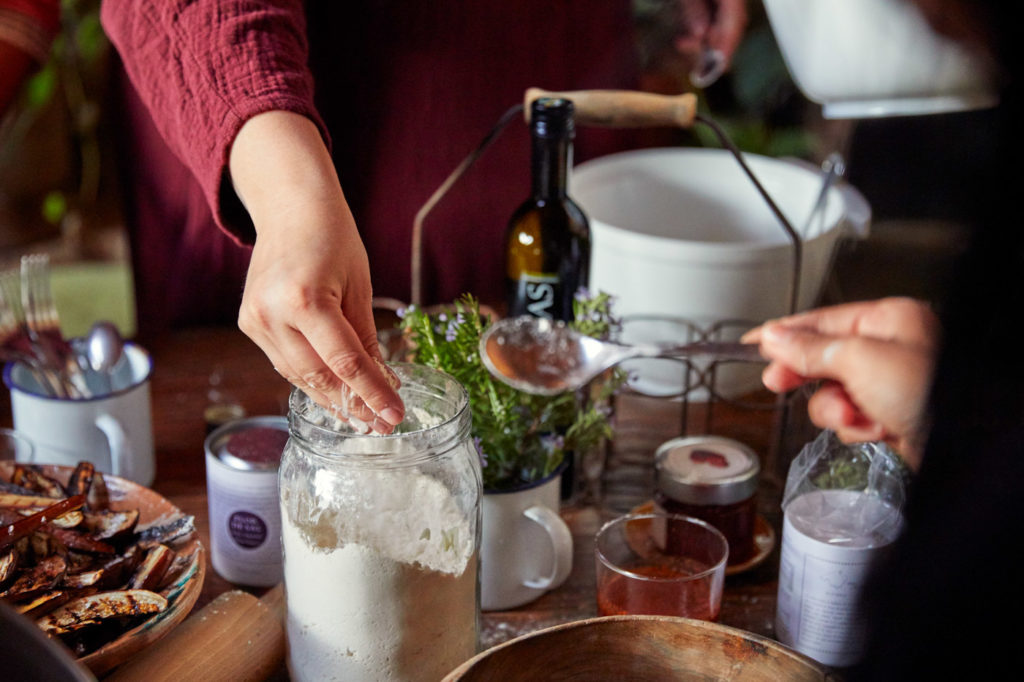
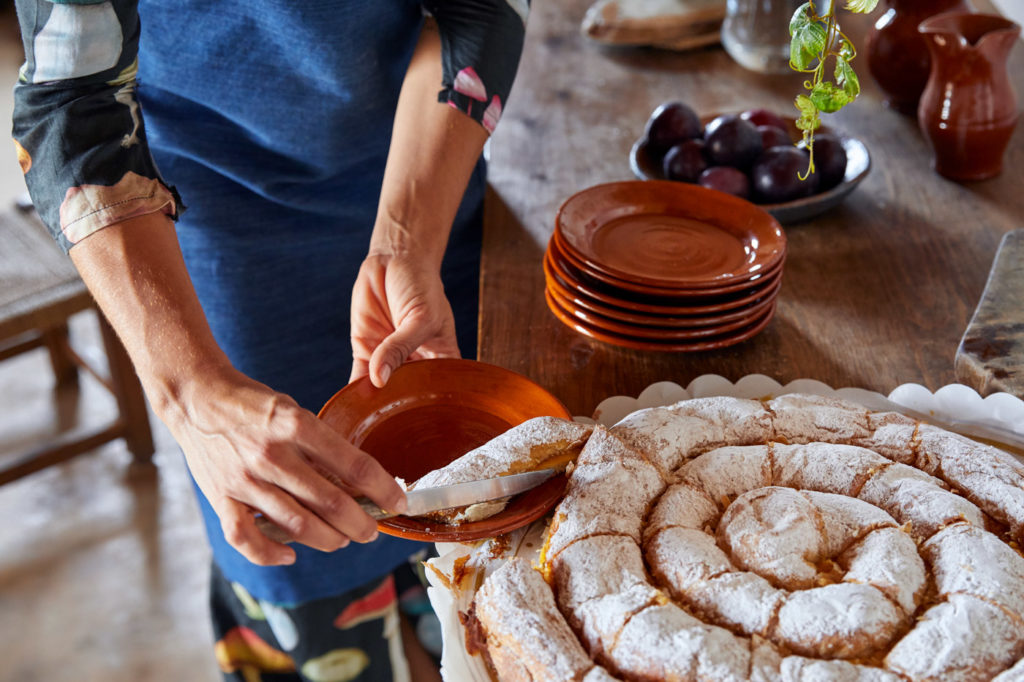
The Art of Spanish Rice on an Open Fire
Every nudge of the poker forces the timber to respond with crackling orange sparks. “We are doing an activity that is related to our way of life, but that is new for you,” Piña Zitrone says with a smile. Instead of standard wood, she is cooking over a fire of vine cuttings, a style known as sarmiento. The venue for today’s meal is the Bodega Ribas vineyard in Consell, the oldest winery on Mallorca. Iten is busy setting the outdoor table; the view for lunch will be of gnarled vines, rocky soil, and distant mountains.
This afternoon’s lunch, currently cooking in a clay pot balanced over the open fire, is arroz meloso, or creamy rice. Olive oil, green onions, artichokes and rice swirl in water. Chunks of sobrasada—a local raw cured sausage made from ground pork, paprika, salt and spices (crafted by another local producer, The Can Company)—is the final addition to the mixture. “Black pig is native to Mallorca. It is free range and loves to eat grains and figs. He’s a foodie pig,” laughs Piña Zitrone. “The meat is very tender and is naturally organic.” It’s the dehydration of the meat in high humidity and mild cold that gives sobrasada its characteristics. Pork has been the major source of protein in Mallorca since the Middle Ages, after the rule of the Moorish Empire came to an end. There would be an annual slaughter of the pig in winter, called matança, and the resulting meat products sustained a household for months—a practice that still occurs in some homes today.
As we scrape the last bits of savory rice from our bowls, Iten cuts portions of a traditional dessert native to Mallorca called ensaimada. The spiral-shaped, flaky pastry contains lard—called saïm which stems from the Arabic word, shahim, meaning “fat”—instead of butter, which returns to the intention of using every part of the pig. Filled with a burnt sugar custard and dusted with powdered sugar, it is the perfect end to a picturesque lunch.
Our Spanish days include everything from picking and preserving olives—as well as tasting local olive oils—to a lively night out in Palma enjoying a tapas dinner. Another afternoon is spent aboard the Bonnie Lass cruising the northern shore of Mallorca, sampling gourmet canned seafood, and though each enviable activity is sure to prove unforgettable, this afternoon’s paella lunch is the event I’ve been waiting for.
After running a paella business in the U.S., Ruiz de Huidobro knows her way around a paella pan. First to sizzle are red shrimp from Sóller, then chunks of chicken. Next comes the squid, bell peppers and sofrito. The ingredients are leaving remnants in the olive oil, layers that will enhance the taste of the final dish. “Olive oil absorbs properties and it gives its properties. That’s why it’s a flavor conductor,” chimes in Piña Zitrone who is co-cooking today’s meal. I turn to Piña Zitrone for a proper explanation of what constitutes as authentic paella. “When we cook dry rice, we can call it paella, but we have to be careful. Because, for example, Valencian paella has a very strict list of ingredients. If you don’t use those ingredients, you can’t call your rice a paella,” she says.
When it comes to cooking this dry rice, there are two methods: Alicante style and Valencia style. “In Valencia, they make the broth first: they cook the ingredients, add the water and prepare the liquid. Once the liquid is done, they add the rice.” The Alicante way—how it is done in the Balearic islands and what I’m witnessing today—involves first cooking the individual ingredients, then adding in the rice so all the flavors meld together. Only then is liquid added. Piña Zitrone adds,“Cooking of the rice is the most important factor, probably, at a Spanish table. They will discuss this for hours. If the rice is overdone, you will lose your reputation as a cook,” she says with a laugh. “It is unforgivable. Don’t show up for a while.”
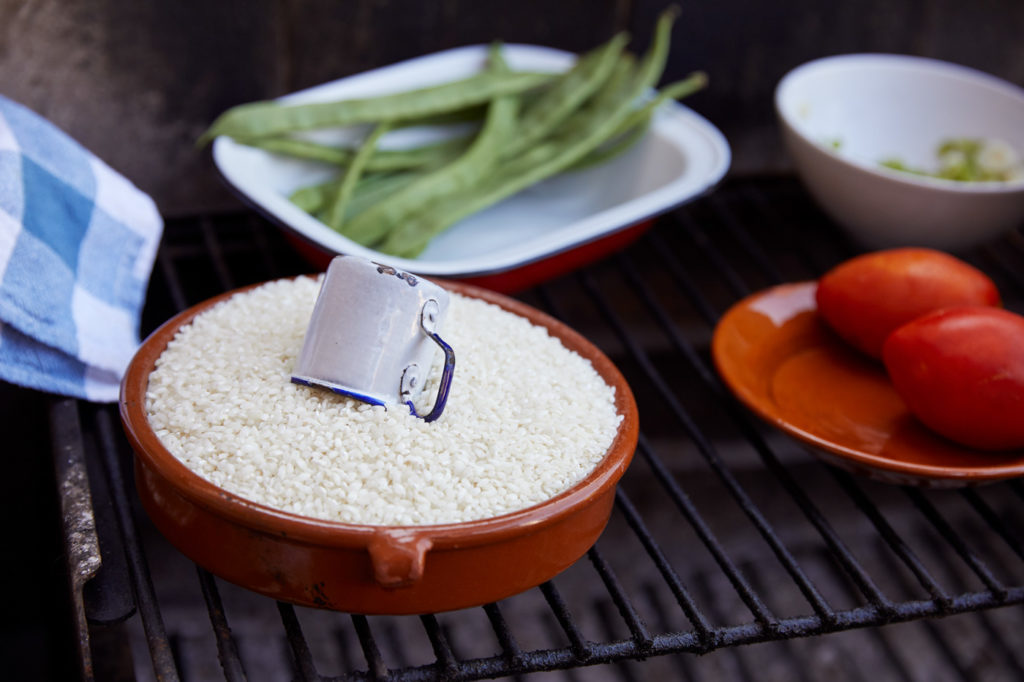
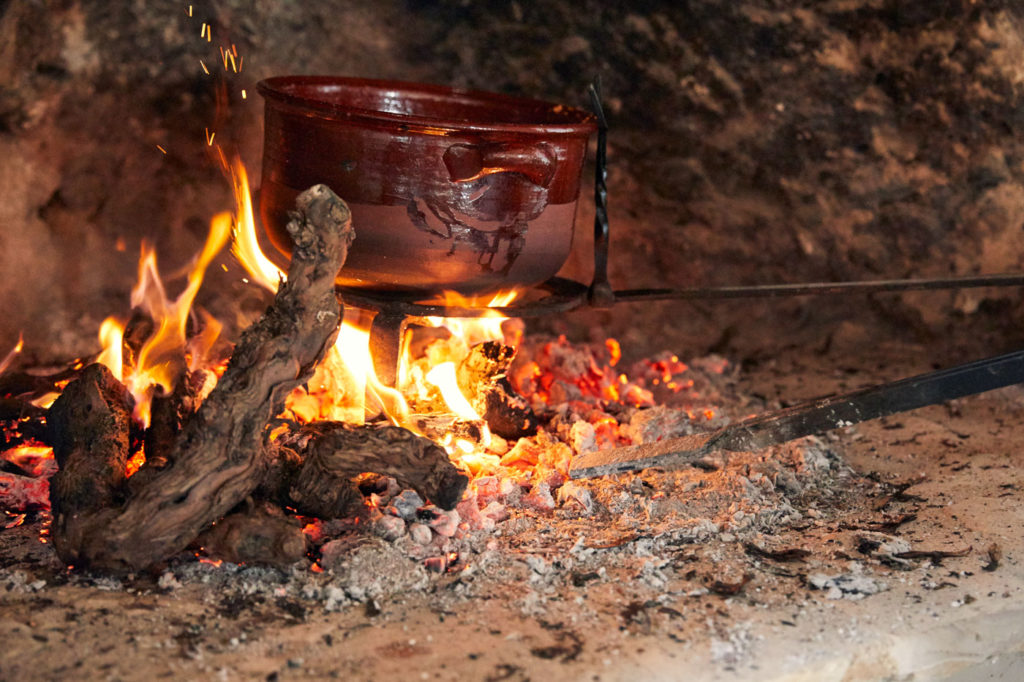
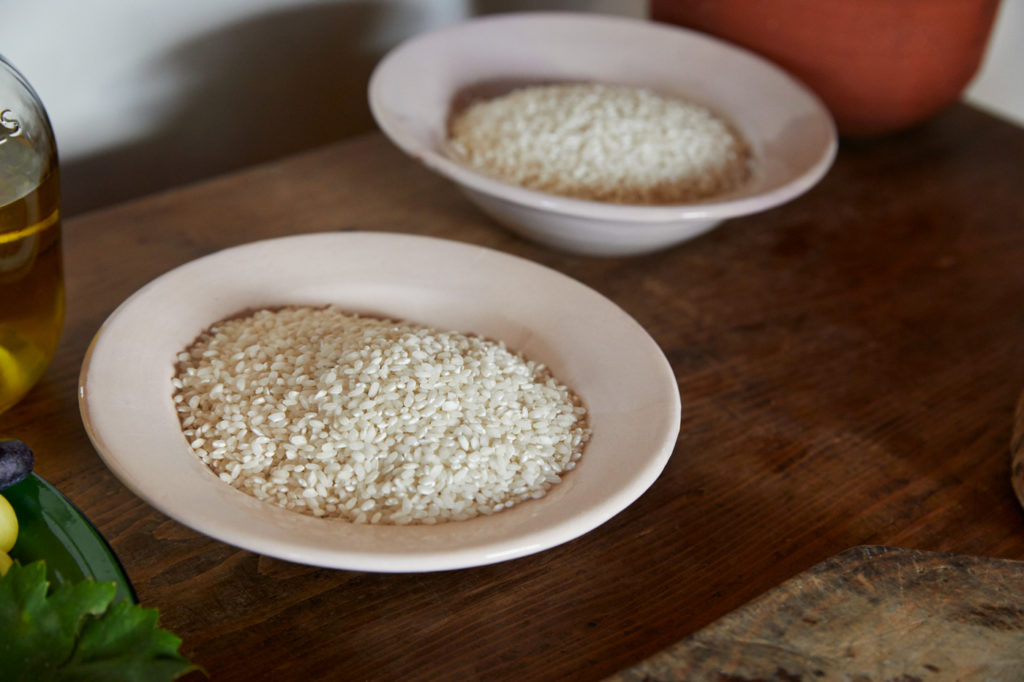
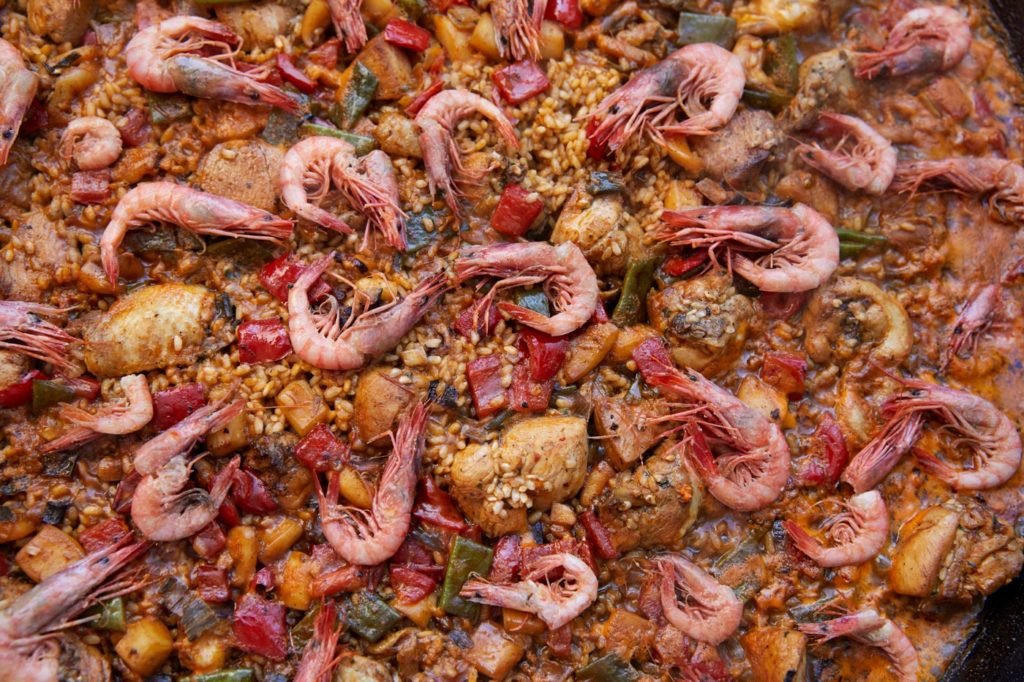
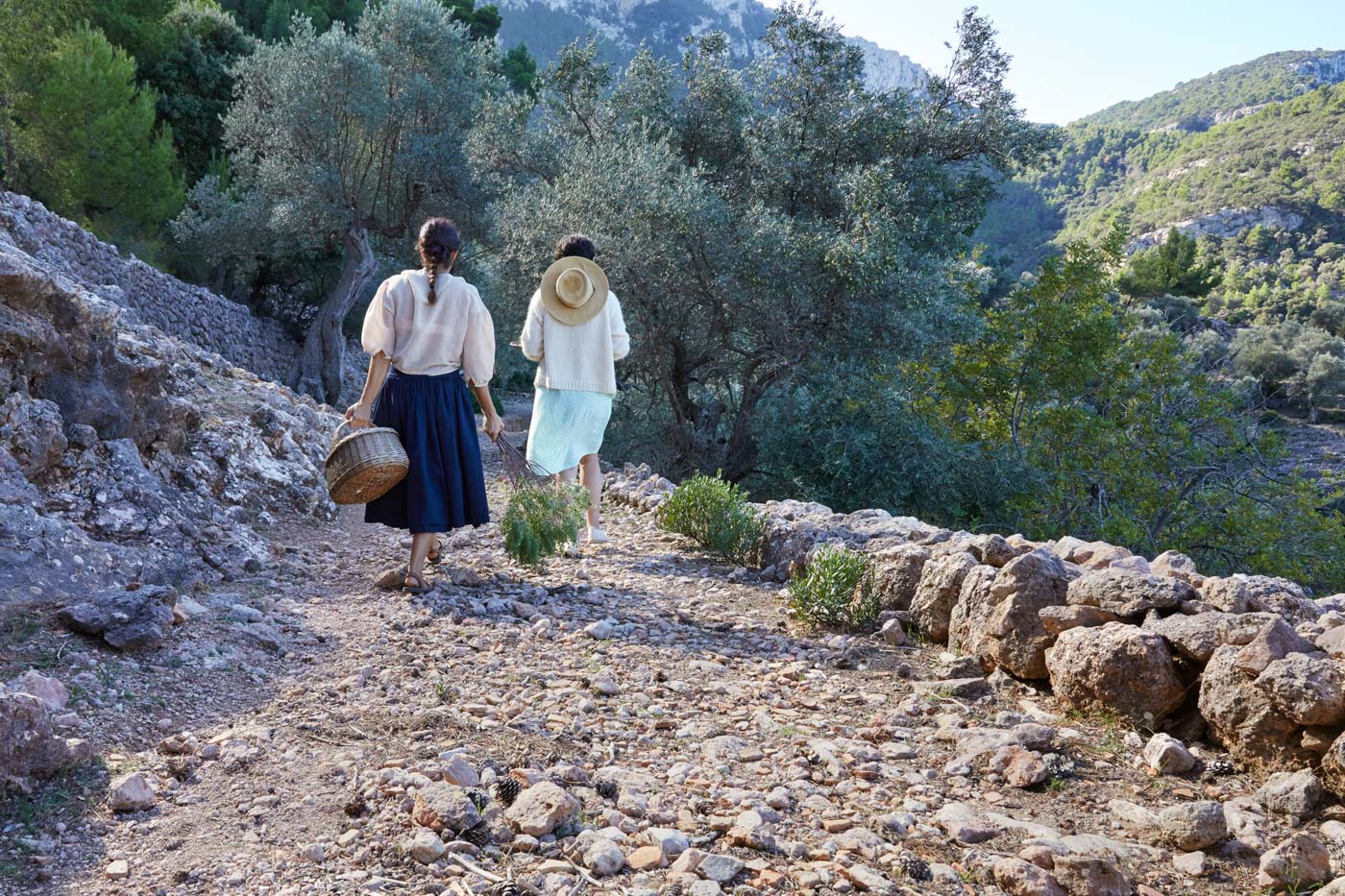
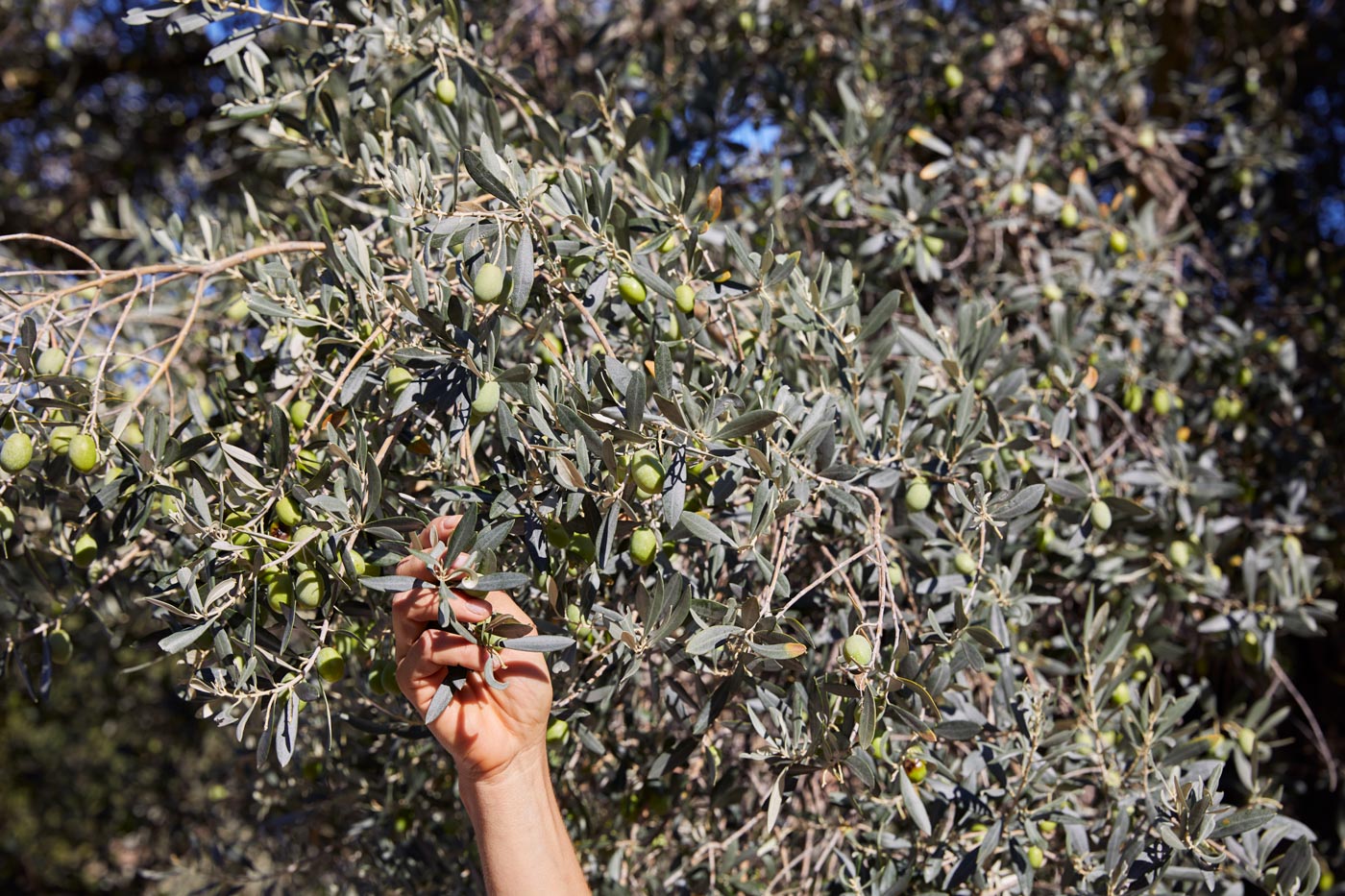
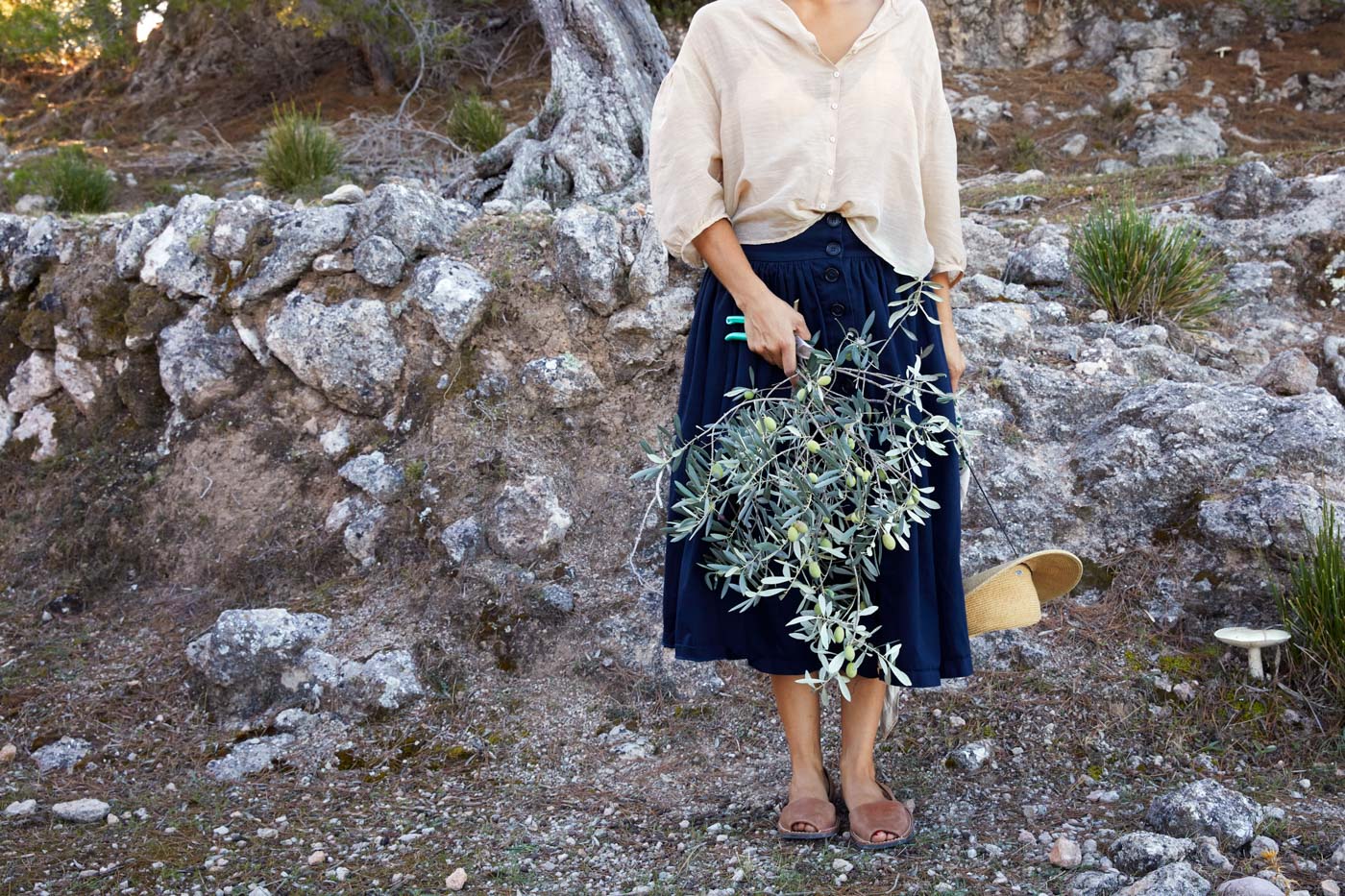
Preserving the Past
The culmination of our week is a dinner party at Son Rúllan. Guests begin to arrive—some are local artisans whose products we’ve had the pleasure of enjoying all week—and we mingle amongst them as the sun dips and live music fills our ears. In the midst is Barbara Mesquida Mora, a local winemaker committed to preserving Mallorca’s culture and identity through her craft. She uses the once abandoned indigenous grape varietal, callet, in her wines which are produced on her biodynamically cultivated vineyard in accordance to nature’s rhythms.
The guest of honor tonight is Pastry Chef Tomeu Arbona—a guardian of historic Mallorcan recipes and cooking techniques—who is sitting quietly at the end of the room. As his wife pours olive oil on the large farm table, Chef Arbona starts to sing an old harvest song. He takes his wife’s place in order to roll and stretch dough until it nearly spans the width of the wooden surface. Scooping lard from a vessel, his fingers smear the white fat; the dough is rolled and twisted into a rope, then coiled on to a pan. He softly croons a children’s bedtime song as he ceremoniously lays a white cloth on top of the raw ensaimada, putting it rest. The is an old ritual, a show of respect with deep cultural significance, and it is captivating.
Chef Arbona has prepared a traditional sweet and savory stew made with turkey, quince, dried figs, sweet potatoes and onions, and covered the entire dish with mini ensaimadas to be cooked in the outdoor oven. I observe the chatty conversations between locals, transplants and travelers. Although we’ve experienced this culinary retreat together, everyone will have their own version of Mallorca to take home.
“I want guests to leave Mallorca with inspiring ideas, ones that ignite passion and creativity—those things are key as a traveler,” says Ruiz de Huidobro. “I want them to discover Spain in a real way and for us to share our passion for hosting.”
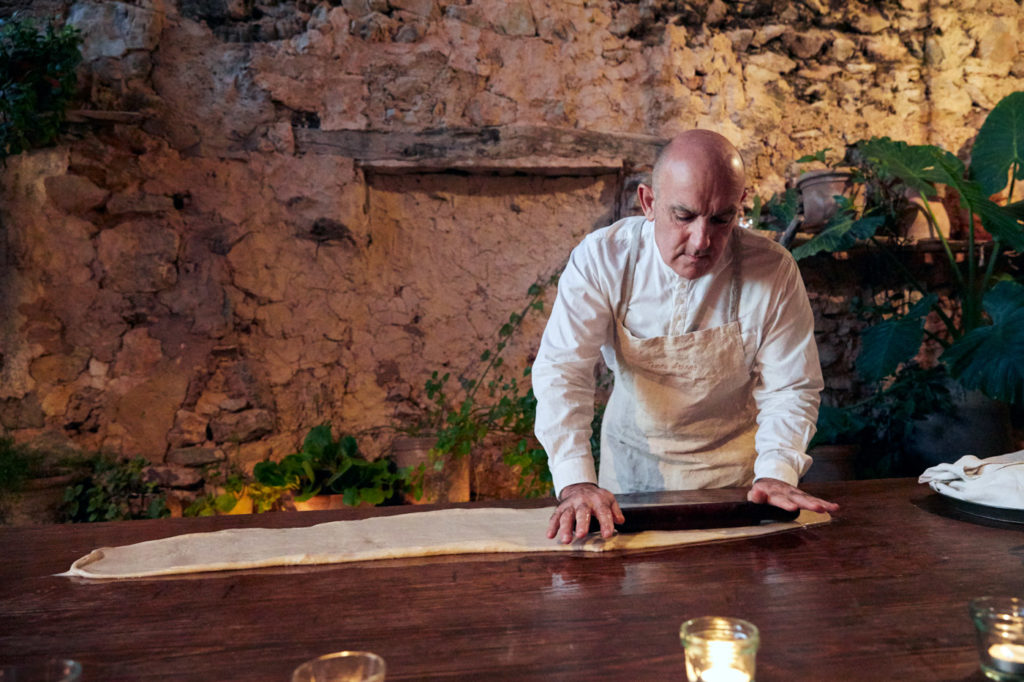
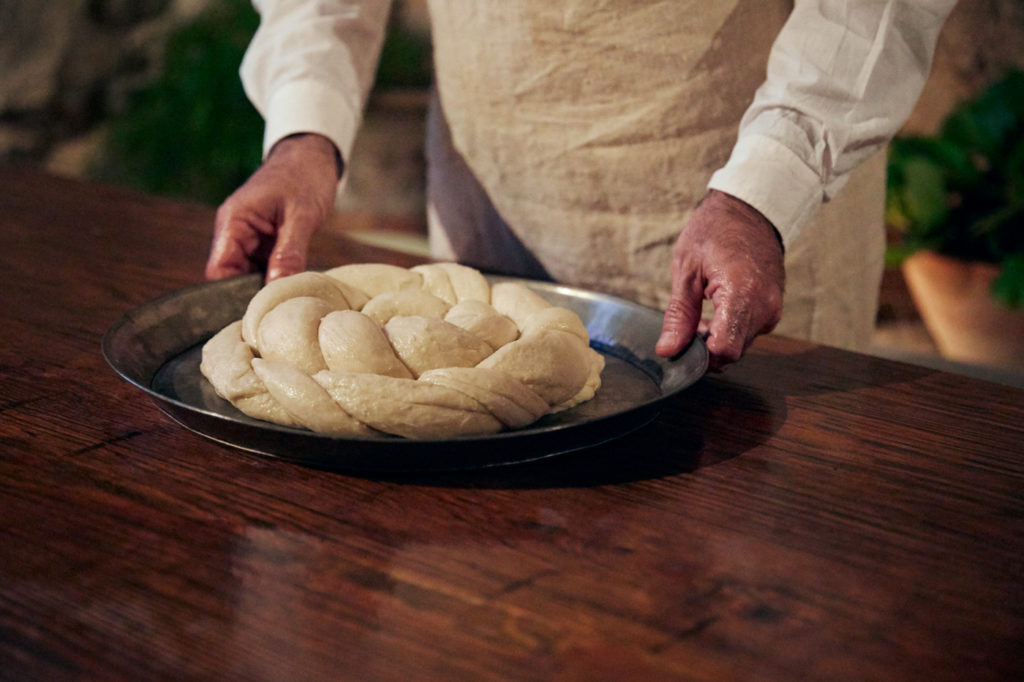
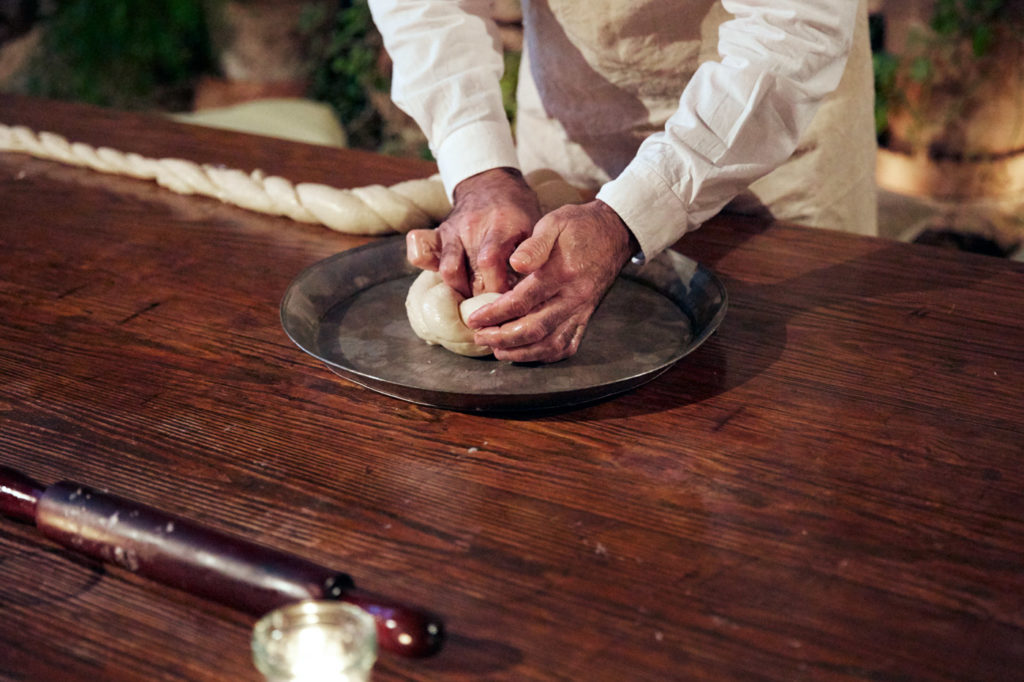
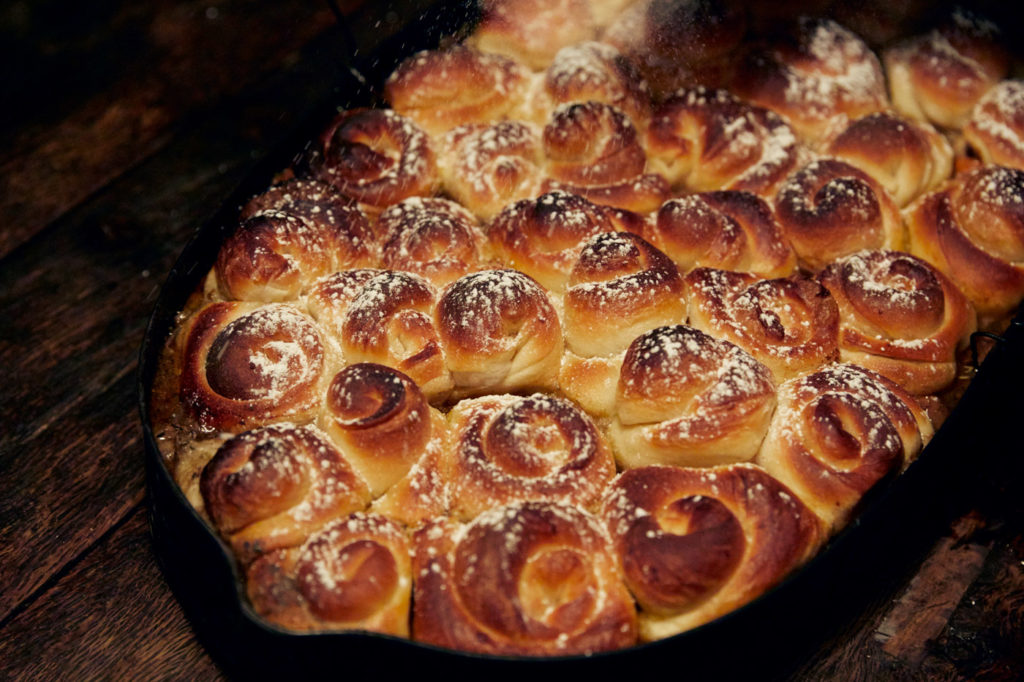
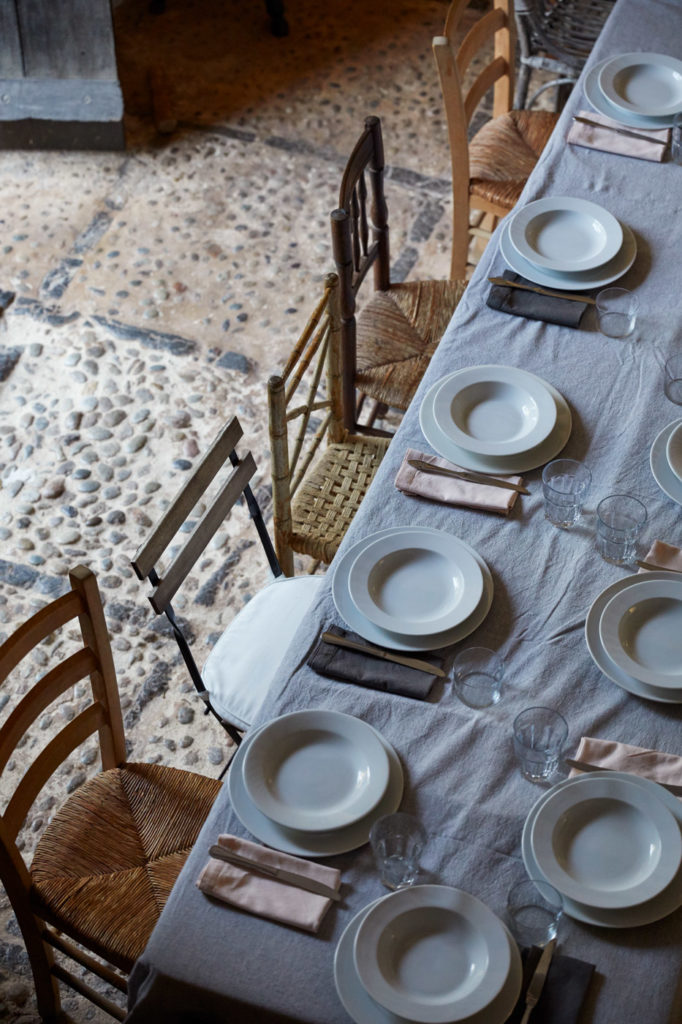
——
Editor’s Note: This story was produced in collaboration with Deborah’s Culinary Island and Españolita Trips. The next Españolita Trip will take place in Mallorca, Spain, from April 30 through May 5 at Son Rúllan. Visit www.espanolitatrips.com for full details on activities and bookings.

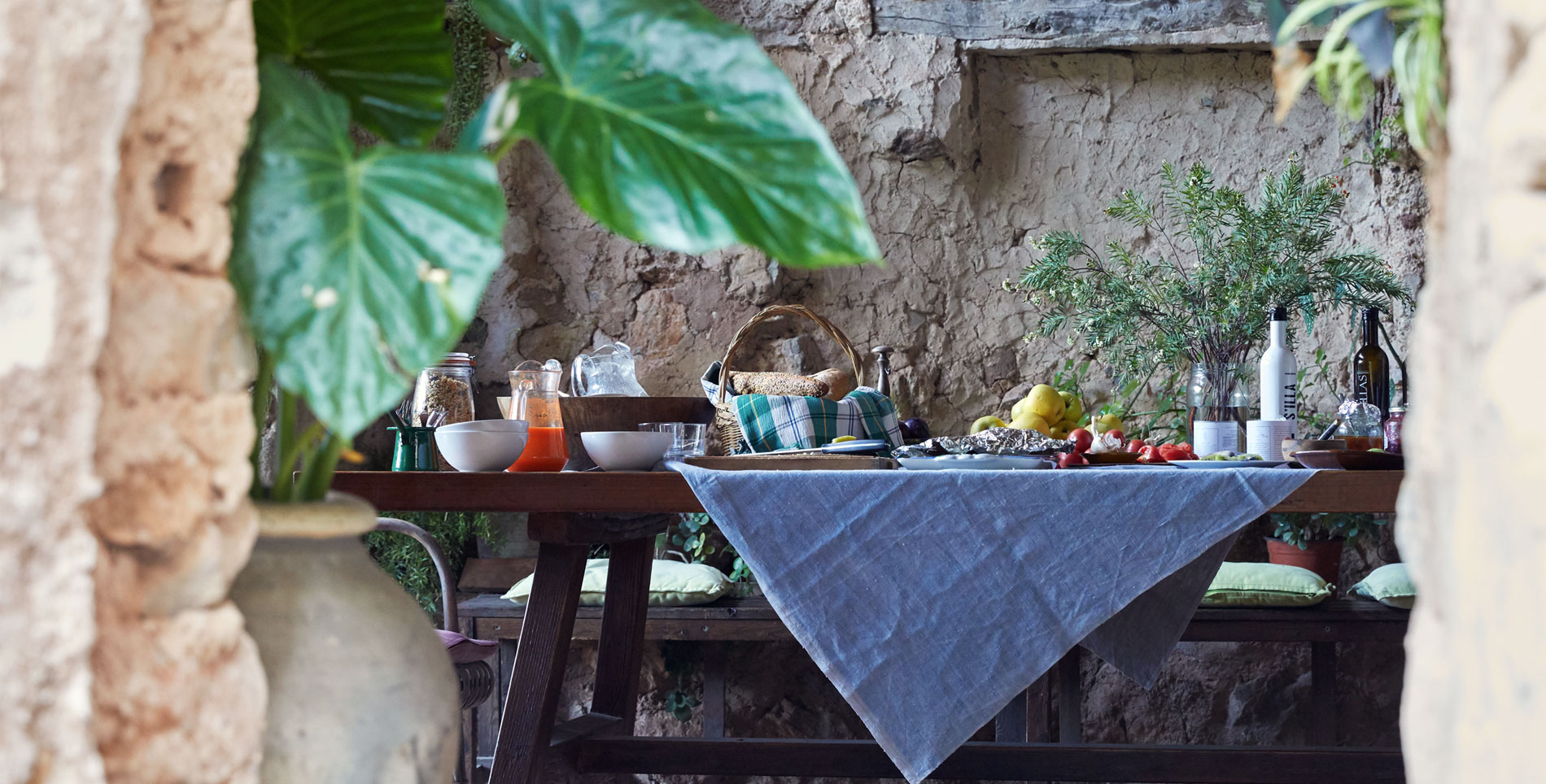

Our comments section is for members only.
Join today to gain exclusive access.